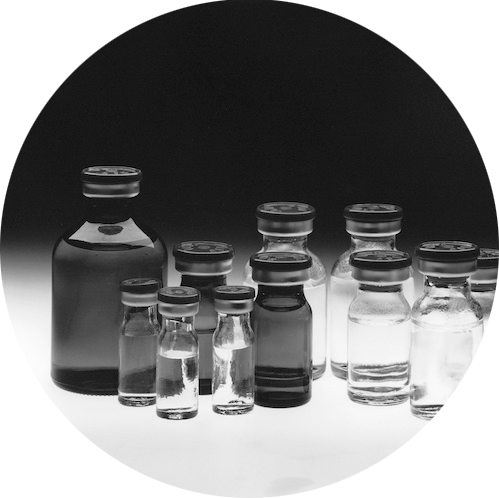Antineoplastic Agents Profile

OTHERS – MULTIPLE CLASSIFICATIONS (IARC 1, 2A, 2B)
Contents
Antineoplastic Agents Profile
QUICK SUMMARY
- A group of drugs that are used to treat various cancers
- Associated cancers: Cancers of the breast, lung, ovary, liver, and bladder; cancers of the hematopoietic system
- Most important routes of exposure: Inhalation, skin contact, ingestion, needle stick injury
- Uses: Prevent the growth and spread of tumor cells
- Occupational exposures: Approx. 79,000 Canadians are exposed at work, primarily pharmacy staff (pharmacists, technicians, and assistants) and nurses
- Environmental exposures: Via drinking water, results are inconclusive; also from cancer treatment for patients
- Fast fact: Antineoplastic agents are increasingly used as treatments for cancer and other conditions.
General Information
Antineoplastic agents, also referred to as chemotherapy drugs or cytotoxic drugs, are the most common type of systemic drug therapy to treat cancer.[1] These drugs interfere with cancer cells’ ability to grow and spread in a variety of ways. They are administered to treat chemo-sensitive cancers (e.g. testicular cancer), as adjuvant therapy (i.e. in conjunction with surgery or radiation), as maintenance therapy (i.e. to prevent relapse and improve survival), or as palliative treatment (i.e. to reduce symptoms and improve quality of life).[1]
Different antineoplastic agents have been classified by the International Agency for Research on Cancer (IARC) as Group 1 (carcinogenic to humans), Group 2A (probably carcinogenic to humans), or Group 2B (possibly carcinogenic to humans) based on varying strengths of evidence of carcinogenicity in animal and human studies, as well as mechanistic considerations.[2,3,4,5,6,7]
A number of adverse health effects are associated with exposure to antineoplastic agents in humans and animals. These include gastrointestinal problems, kidney damage, neurotoxicity, bone marrow suppression, hair loss, and reproductive problems after long-term use.[8]
In addition, patients receiving antineoplastic agents as therapeutic treatments are at increased risk of cancer and other health outcomes. CAREX Canada does not review this exposure circumstance because these treatments are often a necessary medical intervention with tangible benefits for patients. Conversely, workers handling antineoplastic agents are at risk of adverse health outcomes with no positive impact on their well-being.
IARC Classification of antineoplastic agents[9,10]
| IARC Classification Group | Antineoplastic Agent |
|---|---|
| 1 (Carcinogenic to humans) | Arsenic trioxide Melphalan Thiotepa Busulfan Chlorambucil Cyclophosphamide Etoposide Tamoxifen |
| 2A (Probably carcinogenic to humans) | Azacitidine Cisplatin Procarbazine Teniposide Carmustine Adriamycin Lomustine |
| 2B (Possibly carcinogenic to humans) | Amsacrine Streptozotocin Daunomycin Bleomycin Mitomycin Mitoxantrone |
Regulations and Guidelines
Occupational Exposure Limits (OEL)
No occupational exposure limits for Canada or any other international bodies were located.
Classifications under the Canadian Environmental Protection Act (CEPA)
| Agent | Designation | Date added |
|---|---|---|
| Adriamycin | DSL* – high priority substance with lowest potential for exposure | 2006[11] |
| Chlorambucil | DSL* – high priority substance | 2004[11] |
| Cisplatin | NDSL** | 1998[11] |
| Cyclophosphamide | DSL* – high priority substance | 2004[11] |
| Melphalan | DSL* – high priority substance | 2004[11] |
*The Domestic Substances List (DSL) is an inventory of approximately 23,000 substances manufactured in, imported into, or used in Canada on a commercial scale. The DSL is the sole standard against which a substance is judged to be “new” to Canada.[12,13]
**The Non-Domestic Substances List (NDSL) is an inventory of substances included in the EPA’s Toxic Substances Control Act (TSCA), but not on Canada’s DSL.[13]
Adriamycin, chlorambucil, cisplatin, cyclophosphamide, and melphalan were not included in other Canadian government chemical listings reviewed.[14]
Main Uses
Antineoplastic agents are drugs used to treat cancer and other conditions such as rheumatoid arthritis and psoriasis.[15]
Occupational Exposures Overview
Occupational exposure to antineoplastic agents may occur directly via dermal contact, inhalation, ingestion, accidental injection, or indirectly via contact with contaminated surfaces and objects.[17] This can occur in hospitals, where antineoplastic agents are handled in shipping and receiving areas, prepared in pharmacies, administered in wards, and contacted through sanitary services such as laundry, cleaning, and waste handling.[18] Exposure can also occur outside of hospitals in workplaces such as community pharmacies, veterinary care facilities, and home care settings.[19]
CAREX Canada estimates that approximately 79,000 Canadians are exposed to antineoplastic agents at work; most exposures occur in the moderate category. In addition, over 75% of exposed workers are female.
Exposure to antineoplastic agents was not estimated by industry per se, but by setting. The largest number of workers exposed were in non-hospital settings, with a substantial proportion working in hospitals.
Occupations at risk of exposure to antineoplastic agents include community pharmacy workers (including pharmacists, technicians, and assistants), hospital nurses (including nurses and licensed nurse practitioners), and hospital pharmacy workers (including pharmacists, technicians, and assistants).
For more information, see the occupational exposure estimate for antineoplastic agents.
Sources
Subscribe to our newsletters
The CAREX Canada team offers two regular newsletters: the biannual e-Bulletin summarizing information on upcoming webinars, new publications, and updates to estimates and tools; and the monthly Carcinogens in the News, a digest of media articles, government reports, and academic literature related to the carcinogens we’ve classified as important for surveillance in Canada. Sign up for one or both of these newsletters below.
CAREX Canada
School of Population and Public Health
University of British Columbia
Vancouver Campus
370A - 2206 East Mall
Vancouver, BC V6T 1Z3
CANADA
As a national organization, our work extends across borders into many Indigenous lands throughout Canada. We gratefully acknowledge that our host institution, the University of British Columbia Point Grey campus, is located on the traditional, ancestral, and unceded territories of the xʷməθkʷəy̓əm (Musqueam) people.


